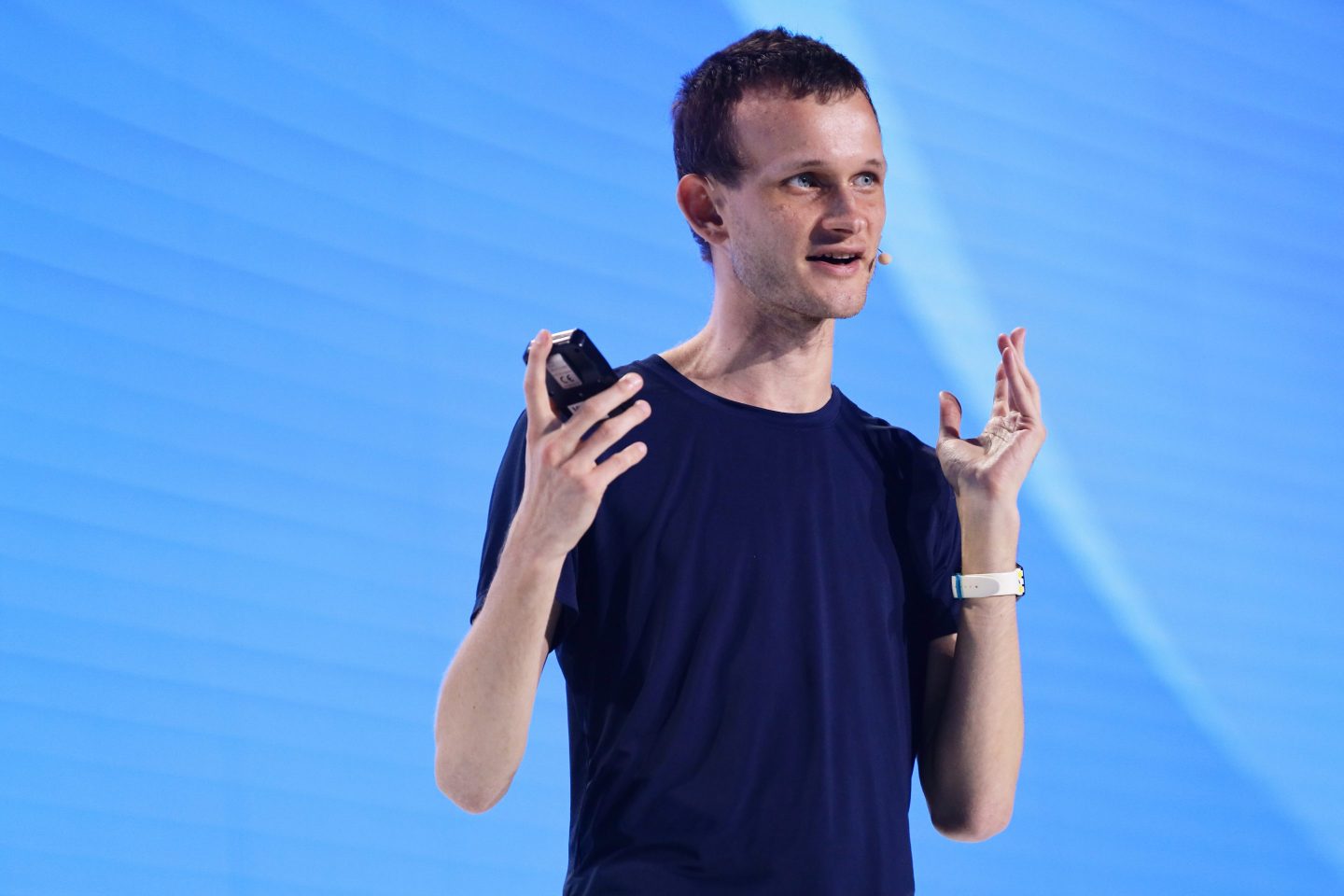Hello and welcome to Eye on AI. In this edition…consultants’ automation dilemma…OpenAI unveils a shopping feature for ChatGPT…Bloomberg finds RAG can make AI models less safe…and brands race to figure out chatbot-mediated commerce.
Management consulting is high on the list of industries whose business model is threatened by generative AI. After all, analyzing written documents, doing research, writing reports, and coding software applications for clients is a lot of what consultants do. If your client can now use a “deep research” AI agent to do this work, do they still need to hire you? Even if the customer does hire you, they’ll probably expect you to use such an agent and bill for less time—upending the cost structure of a consultant’s business. So management consultants are having to come to terms with AI perhaps faster than other fields—and how they are doing so may have lessons for us all.
Recently, I spoke to David Pereira, who is head of generative AI for Europe and Latin America at NTT Data, the IT consulting and services provider that is owned by Japan’s NTT Group. Pereira’s job is not just about how NTT Data is using AI to help transform its clients’ business. It’s also about how NTT Data is transforming itself to meet the genAI moment. Pereira tells me that NTT Data’s own analysis indicated that 40% of the consulting firm’s revenues could be jeopardized by generative AI. So getting this transformation right is a high-stakes venture. “There was a challenge there, but also an opportunity for us,” he says.
Pereira says NTT Data has organized its response to genAI around four main work streams. The most important, he says, is “talent and cultural transformation.” The consulting firm is training all of its employees to understand and use AI. It is also thinking hard about how roles within the company will change—and proactively looking to reconfigure its workforce around the use of AI.
The second stream is called “value development” and concerns how NTT Data uses generative AI directly for and with its customers. Here, the company has put some big numbers on the board: It used generative AI to automate 2 million hours of software development—90% of it for clients—in the last fiscal year, which ended March 31. This coding assistance has meant that NTT Data has been able to lift the average profit margins of its IT services delivery projects by about 2%, Pereira says.
Value-based Pricing, every AI vendor’s Holy Grail
But aren’t NTT Data’s customers aware it is using genAI to deliver some of its services, and demanding the company charge less as a result? Well, Pereira says, in some cases the answer is, yes. But in others the firm either charges a fixed price or has managed to move customers to a value-based pricing arrangement in which NTT Data gets paid based on a particular set of customer KPIs. The deal is often structured as a “success-based” payment, where if the KPI doesn’t move in the right direction, NTT Data makes nothing, but its compensation also ramps up in line with how much the KPI improves.
This kind of pricing model is the Holy Grail for many of those selling AI-based services. But as Pereira notes, many customers are uncomfortable moving to this kind of system because they dislike variable costs. “They expect to know what the cost of the project is beforehand,” he says.
The third stream is what Pereira calls NTT Data’s “productive model,” which is a tech platform the firm has developed for deploying generative AI models and solutions. One of the key considerations here, he says, was to build a platform that was “plug and play”—where it was easy to substitute in AI models from different vendors. Given how fast the technology is moving, he says, it’s essential not to get locked in to any given model or vendor. “We need to have our own platform, so we can decide our strategy independently from the strategy of the vendors,” Pereira says.
The fourth and final work stream is focused on “internal processes,” or the support functions of NTT Data itself, such as human resources, accounting, and marketing, and infusing AI into all of these departments to make them more efficient. Pereira says last year the firm automated 54,000 hours of internal work in this stream. This has included tasks such streamlining the onboarding of new vendors to its purchasing and procurement system and using AI to help screen the resumés of job applicants.
Will a line still exist between service and software?
While Pereira is excited about the potential of AI agents, he says NTT Data is cautious about introducing them for client service tasks, for several reasons. One is simply that they are not yet that reliable. It’s “introducing huge risks, and I don’t think organizations are really prepared to manage this kind of risk [with] completely autonomous processes,” he says. Another reason is that NTT Data wants to emphasize the value its human consultants are providing. Automation can make the firm’s human consultants more efficient, but if the client comes to see AI as the primary driver of the firm’s value, then it’s in trouble. “Because if 100% of the value comes from the automation, then we are out of the equation,” he says.
The whole industry, Pereira says, must figure out how to draw the distinction between providing a service and providing software. Because, he says, if everything becomes software, then consultancies as a whole are finished.
With that, here’s the rest of this week’s AI news.
Jeremy Kahn
jeremy.kahn@fortune.com
@jeremyakahn
Before we get to the news: Are you going to be in London next week? Do you want to know more about how AI will impact your business, the economy, and our society? If so, I hope you’ll join me at Fortune Brainstorm AI London 2025. The conference is being held May 6–7 at the Rosewood Hotel in London. Confirmed speakers include Hugging Face cofounder and chief scientist Thomas Wolf, Mastercard chief product officer Jorn Lambert, eBay chief AI officer Nitzan Mekel, Sequoia partner Shaun Maguire, noted tech analyst Benedict Evans, and many more. I’ll be there, of course. I hope to see you there too. Apply to attend here.
And if I miss you in London, why not consider joining me in Singapore on July 22–23 for Fortune Brainstorm AI Singapore. You can learn more about that event here.
AI IN THE NEWS
OpenAI announces shopping feature for ChatGPT. The company said it will soon allow users of its chatbot to browse product recommendations, which the AI system will make based on user preferences and online customer reviews from sites such as Amazon or Yelp. The move is yet another way in which chatbots are starting to challenge Google Search. For now, ChatGPT users will still be referred to merchant websites to actually complete purchases. And for the moment, the company is not accepting advertising to be displayed alongside—or within—chatbot responses, although it has said it is open to exploring other revenue models in the future. You can read more from Wired here.
Trump guts ranks of federal AI experts. That’s according to a story in Time, which, citing multiple unnamed former U.S. officials, says President Donald Trump has purged most of the 200 AI experts that his predecessor, former President Joe Biden, had recruited to work for various federal agencies through his “National AI Talent Surge” program. The firings come despite Trump’s own stated goal of making the U.S. government a leader in the use of AI technology and his own calls for federal agencies to recruit people with AI expertise.
Google DeepMind U.K. staff want a union. Around 300 U.K.-based Google DeepMind employees are seeking to join the Communication Workers Union, the Financial Times reports. The newspaper says the move is driven partly by employees’ discontent over Google’s decision to work on military contracts, including a major cloud service deal with the Israeli defense forces.
OpenAI CEO Sam Altman says GPT-4o has become too sycophantic. Altman took to social network X.com to acknowledge user complaints that recent updates to his company’s GPT-4o model had made the chatbot “too sycophantic”—i.e. prone to providing over-the-top praise, a tendency which many users have found makes the chatbot less useful for tasks such as critiquing a piece of writing. Altman said the company is urgently working to fix the issue. But the problem may indicate how difficult it has become to improve LLM capabilities in one area without inadvertently making the model worse when measured along some other dimension.
Alibaba debuts Qwen 3 family of ‘hybrid’ reasoning models. The Chinese internet giant’s latest AI model family is capable of choosing when to take more time to “reason” about a response and when to answer instantly, Bloomberg reports. This makes Qwen 3 similar to Anthropic’s Claude 3.7 Sonnet and Google DeepMind’s Gemini 2.5 Pro. The debut signals intensifying competition between China’s AI companies, including Baidu and DeepSeek. It also emphasizes the extent to which Chinese AI companies can quickly match the capabilities offered by U.S.-based vendors, and in some cases surpass them.
EYE ON AI RESEARCH
RAG can weaken AI guardrails. Retrieval augmented generation (RAG) has become a popular technique for businesses building generative AI applications. This involves giving the model access to a particular set of data and asking the model to draw its responses from the information found in that data, rather than relying on what it learned during its training. RAG tends to reduce hallucinations, where AI makes up information, and produce more accurate results. But it turns out that RAG makes models less likely to adhere to the guardrails that AI model vendors create for these systems to prevent them from making undesirable or even dangerous outputs—everything from racist jokes to instructions for how to make a chemical weapon. That’s according to a new paper from a team of AI researchers and engineers at financial data and news giant Bloomberg. The paper indicates that companies should not assume guardrails remain robust in RAG-based workflows and retest the models for specific dangers.
FORTUNE ON AI
Microsoft says Asia’s climb up the value chain—from ‘made in’ to ‘created in’—will make it a hub for AI adoption —by Nicholas Gordon
Exclusive: What if AI could design a jet engine—or even a starship? Google DeepMind and Airbus veterans just raised $23M with an eye on that future —by Sharon Goldman
‘Godfather of AI’ says AI is like a cute tiger cub—unless you know it won’t turn on you, you should worry —by Beatrice Nolan
China’s Huawei encroaches further on Nvidia’s turf and is reportedly set to test a new AI chip aimed at the H100 —by Lionel Lim
Uber and Volkswagen are teaming up to launch a robotaxi service with self-driving, electric microbuses —by Beatrice Nolan
Commentary: Why AI needs the equivalent of the ‘black box’ in aviation—and America should lead the way —by Dewey Murdick and Miriam Vogel
AI CALENDAR
May 6-7: Fortune Brainstorm AI London. Apply to attend here.
May 19-22: Microsoft Build, Seattle
May 20-21: Google IO, Mountain View, Calif.
May 20-23: Computex, Taipei
June 9-13: WWDC, Cupertino, Calif.
July 13-19: International Conference on Machine Learning (ICML), Vancouver
July 22-23: Fortune Brainstorm AI Singapore. Apply to attend here.
Sept. 8-10: Fortune Brainstorm Tech, Park City, Utah
BRAIN FOOD
Brand building in the chatbot age. Last week, Fortune’s Sharon Goldman devoted Thursday’s edition of Eye on AI to her experience using ChatGPT as a shopping assistant, and this week brings news (see above) that OpenAI is creating a shopping feature for the chatbot. So it is perhaps not surprising that companies have sprung up to help brands try to better understand how AI models view them and to help better position those brands so they can be surfaced more prominently in chatbot responses. Companies such as Profound and Brandtech are offering software to analyze how often different AI models surface particular brands and offer advice to these brands on how to improve their positioning. Having strong online reviews is part of the equation. The Financial Times has a fascinating overview of these efforts.













